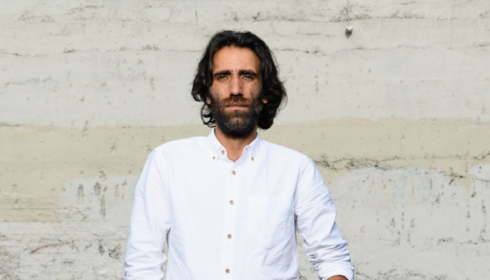By Blue Mahy
Literature adds to reality, it does not simply describe it. – C.S. Lewis
I believe what C.S. Lewis meant is that literature has a symbiotic relationship with the “real” world. Literature takes from the real world but within literature is also the power to reshape it. This is not to say that one short story, poem or novel is likely to change the world. However, one piece of creative writing might well offer an unrealised perspective or new idea to a reader, which can certainly change the way they view reality and this in turn can have a ripple-like effect that spreads to others. So it is said: it takes one drop of water to start a waterfall.
Telling stories has long played a part in sharing experience and knowledge throughout human history. Stories play an important role in all cultures; whether they are told verbally, in books, and now in digital formats, stories are everywhere. Creative writing that engages with themes of discrimination, persecution and breaches of human rights is an especially important avenue for bridging distance between people who otherwise might have very little understanding of each other. Acting alongside articles, whether written by academics or journalists, creative writing that engages with human rights issues becomes a personable way to reach out, to represent a minority perspective, and perhaps to argue a point through the power of visualisation, metaphor and empathy instead of facts and figures.
Compassion is a powerful motivating force and through creative writing people are more likely to encounter a shared universal human experience that overrides denial or fear of the unknown, or of the “Other”. Compassion is the understanding of being in someone else’s shoes and especially experiencing the life of someone who may be far less fortunate. In short stories, or poems, “Boat People” become real people with histories, with dreams, with children, mothers, fathers, sisters and brothers. In creative writing, the “Racial Other”, the “Queer”, the “Disabled”, the “Old Person”, become known, become comparable to friends, neighbours, co-workers and family members. Hence, the member of a minority then becomes harder to ignore, harder to deny, and harder to discriminate against.
An example of this idea in action is the collection of short stories The Boat (2008) by Vietnamese-born Australian author Nam Le, who came to Australia as a boat refugee when he was less than a year old. The book has won numerous prizes, including the prestigious Prime Minister’s Literary Award for Fiction. Each story takes the reader to a different place around the world, a different time, and intensely into a different character’s life. From Iowa, where the author recounts a time – fictional or not – of receiving a visit from his estranged father while undertaking a writers’ residency; to Colombia, and Ron, a teenage boy in a gang dealing with extreme violence; to Hiroshima during World War II and a young Japanese girl, Mayako, being trained to “pick up stones and clods of dirt and throw them at the enemy” and to “charge and fall on them with our knees and elbows and bamboo swords. One hundred million deaths with honour! Defend every last inch of the Fatherland!”
Le’s skill and deftness with language invites the reader into the private spaces of each character, making this the focus rather than the everyday or exceptional settings and events of each story. The Boat, then, is a notable example of stories that transcend the unknown and encourage a reader to become, in a way, the character they are reading about. The diverse stories may very well present characters and places not familiar to the reader but in them all are common and universal experiences: family inter-generational tension and conflict, illness, survival, sacrifice, sex and love. It is significant that Le’s first story in the collection is titled “Love and Honour and Pity and Pride and Compassion and Sacrifice”. These words reflect what is common to all people.
Right Now’s appeal for creative submissions comes from this philosophy that creativity has just as much a role to play as academic articles in promoting and improving knowledge of human rights, and already there are notable pieces on the website that reflect human rights issues in an illuminating way. For instance, Susan Adams’ poem “The Cost of Fear” portrays the possible experience of boat refugees in a very visceral yet subtly emotional way. Lines like “we are cracks/in the rotted deck, splintering” reveal, in very few words, the fear, the danger, the smallness and the vulnerability of those forced to take perilous sea journeys in the search for refuge. Penny Gibson’s short story “In Your Dreams” is a darkly satirical account of the ridiculous and demeaning processes asylum seekers must go through in (or just beyond) Australia. Bedar, the main character, is enticed into being a contestant on a reality TV show—called “Are You Aussie Enough?”—on arriving in Australia from Afghanistan after fleeing the Taliban, and is forced to fight a vicious dog in front of judges and audience. In a telling scene, reflecting the story’s title, Bedar says to the hostess, Starr, “Oh. I – I thought I might come in” and she replies “In your dreams, boy”.
Many literature academics have noted that all writing is ideological. Of course, not all ideology seeks to improve human rights and quite often the dominant ideologies in society and culture can be harmful, especially towards minorities. However, literature often develops in waves that reflect current social consciousness as it is developing; that is, a consciousness that is made up of social concerns, anxieties and ideas. It catches on to the faintest spark and lights a fire that everyone can see, bringing barely realised or understood subjects out into the open.
In that way, literature not only represents social consciousness but can play a part in shaping and transforming it.



